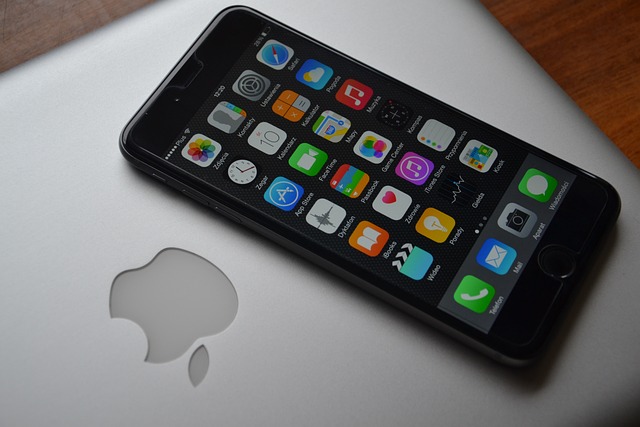Replacing an iPhone battery is a key action to maintain its efficiency and longevity. The built-in lithium-ion battery naturally degrades over time due to charge cycles and chemical reactions, and users can monitor this through the Battery Health feature in iOS settings. It's advisable to replace the battery if it falls below 80% capacity or exhibits signs of safety issues like bloating or overheating. Regular software updates help optimize system efficiency and address battery drain issues. To preserve battery health, charge your iPhone consistently to about 50%, use USB Power Delivery sparingly, and let the device switch to trickle charging on its own once fully charged. Adjusting screen brightness, closing idle apps, and managing app notifications also contribute to better battery management. For those who notice a decline in their iPhone's battery performance, it's essential to back up your data before replacing the battery, which can be done by Apple or a trusted professional. This process involves carefully removing the old battery and installing a new one, followed by restoring your data from the backup to ensure all information is retained. Proactive maintenance and timely battery replacements are essential for maximizing an iPhone's service life.
Ensuring your new iPhone not only serves you efficiently but also maintains its performance over time is a blend of art and science. This article delves into the intricacies of iPhone battery health, the significance of timely software updates, and the best practices for charging and physical care. By understanding the criteria for replacing an iPhone battery with “replace iphone battery” at the forefront, you can take proactive steps to extend its lifespan. With a comprehensive approach that spans from optimizing battery usage to adhering to optimal charging habits, your iPhone will remain a reliable companion for years to come.
- Understanding iPhone Battery Health and Replacement Criteria
- Tips for Optimal Battery Usage to Extend Your iPhone's Life
- The Importance of Regular Software Updates for Battery Management
- Physical Care and Maintenance Strategies for Your iPhone
- Best Practices for Charging Your iPhone to Prolong Battery Longevity
- When and How to Replace an IPhone Battery: A Step-by-Step Guide
Understanding iPhone Battery Health and Replacement Criteria

Maintaining the longevity of your new iPhone is contingent upon several factors, with understanding iPhone battery health being paramount. The lithium-ion battery in your iPhone is a critical component that degrades over time due to charge cycles and chemical aging. To ensure your device remains efficient, it’s essential to keep track of its performance through the Battery Health feature available in the Settings app under Battery. This tool provides a percentage indicating the battery’s capacity relative to when it was new, as well as whether its peak performance capability is compromised. If the battery’s maximum capacity falls below 80%, it may impact the iPhone’s endurance between charges. It’s recommended to replace the iphone battery if the capacity drops too low, which can be determined by this feature. Additionally, if the phone is unable to hold a charge for five hours at a time under standard conditions as defined by Apple, or if it’s unsafe (such as bloating or overheating), it’s definitely time to consider an iPhone battery replacement. Regular maintenance and timely replacement can significantly extend the lifespan of your device, ensuring it operates smoothly for years to come.
Tips for Optimal Battery Usage to Extend Your iPhone's Life

Regular maintenance and smart usage patterns are key to optimizing your iPhone’s battery life, thereby enhancing its longevity. To start, reducing screen brightness may seem minimal, but it significantly contributes to extending battery life. Utilize the ‘Battery Percentage’ feature to monitor your power usage throughout the day and adjust settings accordingly. Additionally, closing apps that are not in use can prevent unnecessary background activity, which is a common drain on battery reserves. Tailor app notifications to prioritize those most important to you, thereby reducing the frequency of app awakening and subsequent battery strain.
When it comes to extending the life of your iPhone, it’s also wise to keep your device updated with the latest iOS version. Updates often include energy-saving enhancements that can improve overall efficiency. Conversely, be mindful of apps that are not optimized for battery performance and consider removing or limiting their use if they consistently drain your battery quickly. Lastly, if you notice a significant decline in battery performance, it may be time to consider replacing the iPhone battery. Professional battery replacement services can restore your device’s capacity, ensuring many more years of reliable service. Regular upkeep, including battery health checks and timely replacements when necessary, is crucial for maintaining optimal functionality and longevity of your iPhone.
The Importance of Regular Software Updates for Battery Management

Regular software updates play a pivotal role in maintaining the health and longevity of your iPhone’s battery. These updates often include optimizations tailored to improve system efficiency, which in turn can extend the life of your device’s power source. As your iPhone operates, its software intelligently manages resource allocation, ensuring that applications and processes run smoothly without overtaxing the battery. Additionally, these updates can address battery-draining bugs or glitches, which is essential for preventing unnecessary energy consumption. For those considering a replacement of their iPhone battery, it’s advisable to first ensure that your device has the latest software update installed. This step can sometimes resolve performance issues mistakenly attributed to aging batteries, potentially saving users from unnecessary battery replacements. Keeping your iPhone’s software current not only enhances the overall user experience but also contributes significantly to the longevity of your device’s battery life. If you do eventually decide to replace your iPhone battery, it’s recommended to visit an authorized service provider or a reputable technician to ensure the battery is installed correctly and efficiently, ensuring optimal performance for your device.
Physical Care and Maintenance Strategies for Your iPhone

To maintain the longevity and optimal performance of your iPhone, implementing physical care and maintenance strategies is paramount. Regular cleaning is essential to prevent dust and debris from compromising the device’s functionality. Use a soft, lint-free cloth to gently wipe down the exterior, ensuring you avoid moisture on the ports and speakers. For the screen, a microfiber cloth or a specialized screen cleaner can effectively remove smudges and fingerprints without scratching the glass.
When it comes to battery health, replacing the iPhone battery after a certain number of charge cycles can significantly extend its lifespan. Apple’s own service provides this option, and third-party professionals can also perform this task proficiently. It’s advisable to keep an eye on your iPhone’s battery usage through the settings menu; if you notice a consistent decline in battery performance or capacity, consider replacing the battery. This procedure is less costly and more environmentally friendly than replacing the entire device, allowing you to enjoy the longevity of your iPhone without significant interruptions. Regular updates to iOS, coupled with intelligent management of apps and usage patterns, further contribute to the preservation of your iPhone’s overall health and longevity.
Best Practices for Charging Your iPhone to Prolong Battery Longevity

To maintain optimal performance and extend the lifespan of your iPhone’s battery, adhering to the best practices for charging can be pivotal. It’s recommended to charge your device consistently at around 50% to avoid extreme battery depletion or overcharging. This approach helps to calibrate the iPhone’s battery meter and ensures that the power consumption of your device aligns with its reported charge level, which is a crucial aspect when considering replacing the iphone battery. Additionally, to prolong battery health, consider using the USB Power Delivery (PD) feature sparingly, as it charges faster than necessary for routine use. The built-in iOS software intelligently manages the charging process, and when connected to a charger after the iPhone reaches a full charge, it will switch to a trickle charge mode to prevent overcharging. Regular updates to your iPhone’s operating system also play a role in battery management by optimizing power usage and allowing for efficient energy consumption. Proper care and attention to these charging practices can significantly contribute to a longer battery lifespan, potentially delaying the need to replace the iphone battery altogether.
When and How to Replace an IPhone Battery: A Step-by-Step Guide

To maintain the optimal performance of your iPhone, understanding when and how to replace its battery is crucial. The battery in an iPhone typically lasts around two years under regular usage conditions, but factors such as charging frequency, app usage, and network connectivity can influence this duration. As signs of reduced battery life emerge—such as shorter usage times between charges or a battery icon indicating the battery’s health has significantly decreased—it becomes prudent to consider a replacement.
When you’ve made the decision to replace your iPhone battery, it’s important to approach the task with care. Begin by backing up your device using iCloud or iTunes to ensure that none of your data is lost during the process. Next, locate a certified service provider or obtain the appropriate tools and a genuine replacement battery if you’re skilled in DIY repairs. The iPhone battery is intricately integrated into the device, so follow the steps meticulously: power down your phone, remove the necessary screws from the back panel, disconnect the battery from the logic board, replace the old battery with the new one, reconnect the battery to the logic board, and secure the back panel with the original or new screws. Upon completion, restore your iPhone from your backup and verify that the replacement battery is functioning correctly. Regularly checking and replacing your iPhone battery as needed will help preserve its longevity and ensure consistent performance.
In conclusion, maintaining the longevity of your new iPhone hinges on a combination of understanding its battery health and replacement criteria, adopting optimal battery usage habits, prioritizing regular software updates for effective battery management, and implementing rigorous physical care and maintenance. Among these, knowing when and how to replace an iPhone battery, as outlined in our step-by-step guide, is particularly crucial. By following the best practices for charging your device and staying informed on the latest updates from Apple, you can significantly extend your iPhone’s service life. With diligent attention to these key areas, your iPhone will continue to perform at its peak for years to come.
